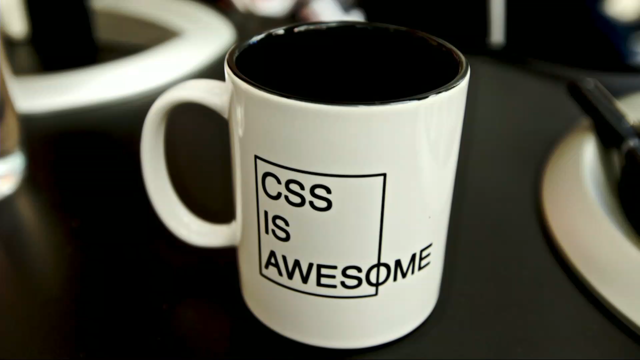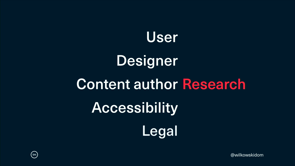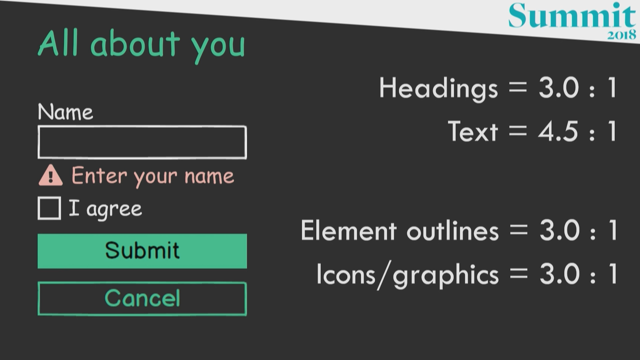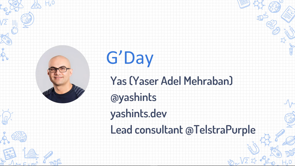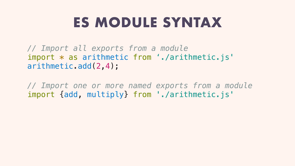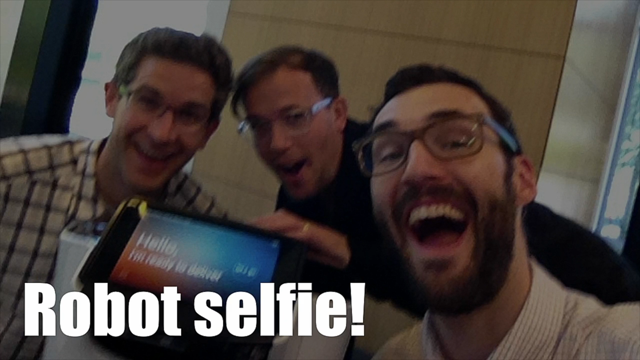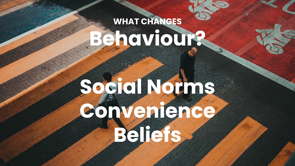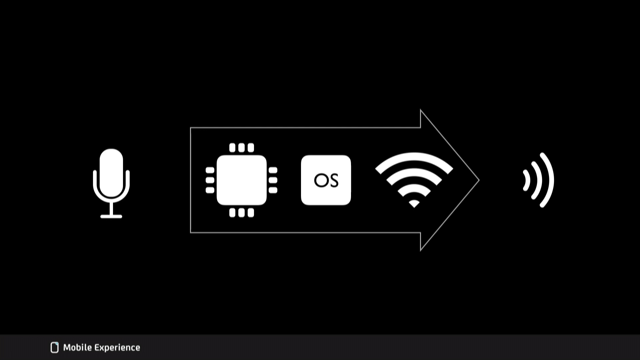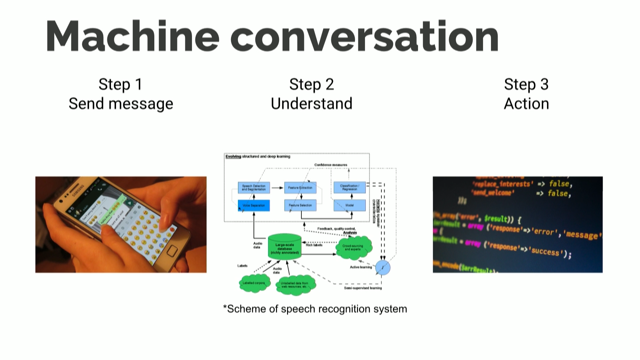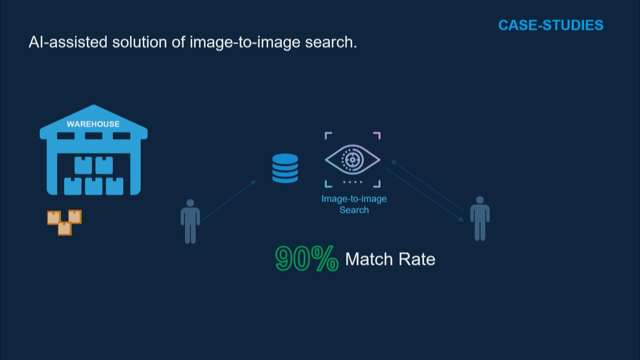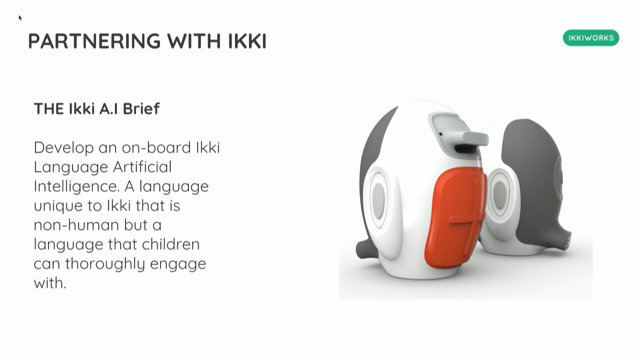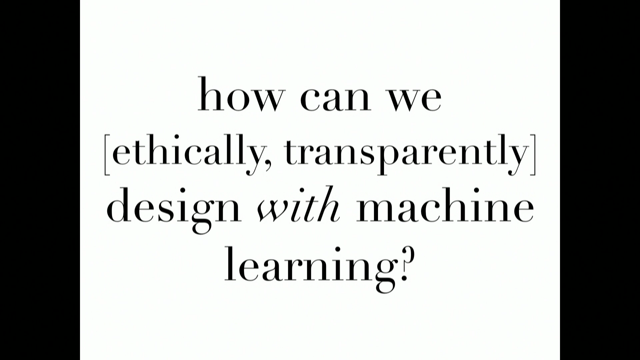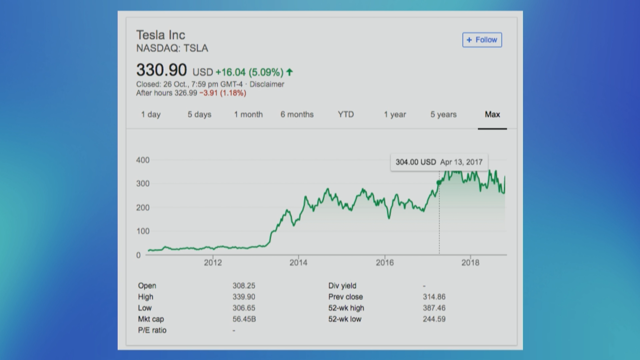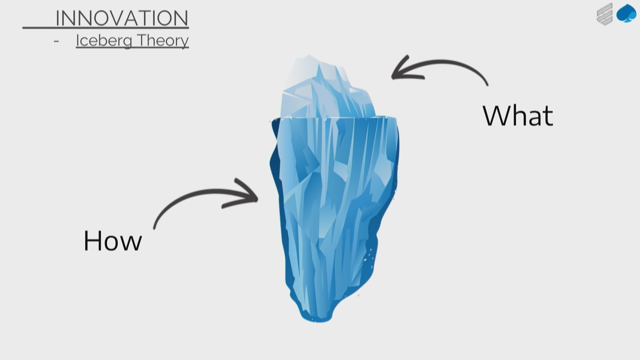
(light techno music) (audience applauding) So hopefully I can follow that on with some good content. I hope you've all have a good lunch and we'll get cracking into it.
This is quite an interesting topic for me, so it's something different than what I'd usually do. I'm usually a bit of a techie guy.
I'm more happy up here with an LSTM printed out showing you how it works than I am doing an innovation presentation.
But bear with me because this is some of the things that I've noticed and I've learned throughout a lot of the projects I've done. So the next slide.
My clicker is not working, it's a good start. So this one, this quote.
Never before in history is innovation offered the promise of so much in such a short time. So at the moment we're got AIS every year.
You can't do what you did last year, right? The amount with progression open source technology, the amount we've progressed in what we can actually is changing so rapidly that organization's trying to keep up with it. If you're doing a big million dollar project, chances are you're gonna be six months behind by the time it's in production.
How do you actually manage these things? How do you build innovation into these processes to actually keep that moving on? And the results of not balancing that can be detrimental, right? You're getting models that aren't applicable, they're out of date, your competition is doing a better job 'cause they started two months later.
So things like that are important to keep in mind when we look at this.
So this is innovation in itself is quite a tricky topic. A lot of people get it confused as a theme, but it's not. It's a process.
Innovation is the how in your project.
It's not the what.
The what is essentially how you sell it to stakeholders. The process is where your innovation happens, what changes are you going through, what are you applying to the what to create difference in your projects.
So AI, this is how this relates to this is AI is a tool. Like in innovation it's nothing but a tool. It's an emerging technology.
There's a lot of cool things we can do, but it's not the be all and end all, right? Filling in with innovation projects and fitting it with our change management and businesses, it's how you actually get these things out and how they actually make a verifiable difference in what you're doing.
The one thing I like to keep in mind here, and I run a lot of these workshops and things with clients because education is the biggest thing in the AI space.
If you need people to understand, run education workshops, you'd be surprised how many people pick it up really quickly, start understanding the things you're talking about. I didn't get a lot further but, it's consciously splitting the difference between technology and process.
That way you can clearly define the differences in how you're actually interacting with those. So the next thing is the iceberg theory.
I didn't come up with this one but I found it on Google, it's good.
This one is how you actually talk about your project. So, if someone asks you about your project, most of the time you give them the "what".
My project does this, we created this efficiency, but that's not actually where the innovation happens. Innovation is that big underlying thing the Titanic hit. It's below the surface, it's lodged.
It's where all of your actual things happen. So keep in mind that if you're selling an AI project to internally, externally, customers, stakeholders, you wanna be focusing on the what, what you're actually doing.
But in the back of your mind, you've gotta be able to clearly articulate how innovation came into the process.
Are you just downloading a model of GitHub and running it on your own server and calling that innovation, right? It's not really innovation.
And most of the time it's not even applicable to your own business, right? There's domain specific things and I'd go into this later on that I think it's been mentioned by quite a few speakers so far.
Having domain-specific knowledge like subject matter experts makes all the difference in these projects.
If you have just a team of data scientists that sit in the corner by themselves, you'll get models that don't work because no one's considered how it integrates, what it does, how the business touches it, and what it's influencing.
So there's a couple of key things you gotta think about when you're even describing these projects.
So this one, transformation.
It's a hard thing to do.
You're moving from where you currently are to where your future state is, where your reorganisation, right? The thing you get is, oh, is AI gonna take my job? All those kind of normal things.
But in this model it doesn't take your job. You become the subject matter expert.
If you've got a whole frontline staff, why not get them to try new models, right? You build the models in the background.
You use them as experts to transform from where you are to where you wanna be in the future with this technology. And that's kind of the core message of innovation, right? We're using this technology to create those changes. So the other thing that is important, importance is vision. So vision can often be set by the business and not exactly by the tech guys in the ground and aligning what you are doing with that corporate vision.
It creates adoption, it creates people actually using it because they're aligning where the business is going, and it's something I'm gonna go a little bit further but you have to keep that in mind at every stage with this kind of technology. So the other thing is leadership.
Leaders attract in this space, right? This little person that's gone here with the little ladyship tags around him, basically what they've done is they've made the hard choices.
They've made the hard process, the hard projects. They've trailblazed a little bit, right? This happens in big organisations, particularly as one person has done it.
All of a sudden 10 different departments can replicate that success.
And I think that's a critical thing to keep in mind. I consciously keep that in mind as you're going through. You go, all right, am I the one leading this at the moment? Am I the one that's gonna have to push everyone along with me, drag management along too? I mean oftentimes a project can be great technically, but if it's not supported by management and not facilitated in the process change, it's very difficult for that to actually get adopted. It's very difficult for people in the front lines to adopt anything you're doing or changing in their processes.
So, yeah, this one's, it's kind of a side slide. But you're always gonna have change management, and I think most people are getting pretty good at change management and software projects at the moment.
But with AI it's a little different.
It's a little as a couple little tweaks.
Knowing where you want to go, back to that vision thing, right? AI is definitely part of your vision 'cause these things you're not exactly sure where you're going. You have to have an idea of that.
One critical thing I try to put into the projects I do is I don't wanna fight culture. So a lot of times people go, oh, let's just change all this. Let's innovate all this away.
Let's get rid of this team, roll it into that team, right? The problem is is you're missing out on the benefits of the culture you do have. Is there things you can actually utilise in the current culture that you can draw energy from that and build it on top of your projects. 'Cause if you do that you're gonna get the first thing adopted straight away, right? It might be 80% of your vision, but if it's adopted it's better than 0%.
There's also the management alignment I mentioned earlier.
And education, you can't scale up these projects without understanding.
If I give someone a new UI to use and it's just to click buttons and no one understands what's going on behind it, why are they going to adopt it? Why are they gonna put that into their process? So this was an interesting study that came across Gartner I believe.
It's 4% of companies have deployed AI and I don't even believe that 4% because that doesn't stipulate whether it's a proof of concept or production.
I would guess production would be like 0.01% of actually verifiable AI projects that aren't just logistic progression.
And there's 30% that are still looking.
So that's where your educational piece comes in is your company, your consultants, or the people you're working with, are you actually able to articulate what they can do for the business? Is it something that, it's how to find good use cases, for example, right? You don't know what you don't know.
If you've got examples where you've done great work, how can you actually get that out? How can you talk about it? I mean events like this is a great place to do that, right? We've heard some really good examples of what people have done so far, and that's what you can take back to your business and go, look, these other people have done it. This is our space, what are we waiting for? It's proved that it can be done.
And 35% are struggling.
So this is things that try but there's no value. They determined a use case, it was too hard, too expensive, things like this.
And I think personally this comes back to education as well. There's wins you can get in every business. If your business has data, you can oftentimes get something like this done. You might need a lot of work but you can get through it. So what's missing? That's all the innovation stuff.
What's missing from innovation? That's all pretty good by itself but it's not necessarily gonna get people invested in your projects.
So you have to think of things like well being. It's a business value.
Business value commonly gets associated with a dollar figure but oftentimes it's not what we're actually looking for when we look at the outcomes of these projects. We're looking at are we driving well being, or the employee happiness, customer happiness, employee engagement? If your place aren't engaged then you're paying the money for nothing, right? Can you actually facilitate the environment to get these things going? So the three things that help facilitate environments are purpose, what's driving your actions, why you're at work, why are you helping people. Autonomy, am I just filling out a spreadsheet for four hours a day that some computer could do and free up my time to do the actual creative thinking, right? That autonomy thing is really critical 'cause that's where you get a lot of your benefits with these AI projects.
Even autonomy, if it doesn't need to be AI, use RPA, right? If you can automate a spreadsheet, why not? That kind of thing.
And mastery is the other one.
If I've got junior employees, can I give them the knowledge of the business? And people with 20 years inputting some sort of system where I can make all my employees masters of their craft, right? I can get them working on understanding.
They've got something to reference.
And having these kind of things, this can be applied both to your customer and your employees.
It's two things that could work together, 'cause customers, for this kind of stuff, if you're providing them purpose, autonomy and mastery, they feel like you care about them, right? You feel like it's personalised.
It's feel like it's they start to trust what you're offering in some ways because you're actually looking at what they want as opposed to just going, hey, we got this product. Good luck, right? You're actually engaging them with what you wanna do. So this is an interesting quote and I put it in here because I don't entirely agree with it.
The key metrics to good success shouldn't be organisational transformation, but customer transformation. So I think that customer transformation sometimes can come from organisational transformation. But it call comes back to the vision.
If your vision is customer transformation, organisational transformation can be a step. But the goal should be customer transformation. And if your business doesn't have a customer, replace that with employee, something like that, whatever the outcome of your business is.
So vision, the crystal ball here.
What are we doing now, right? That is a hard question to ask.
The businesses I'm involved in, they're multi-billion dollar businesses that got 2,000 employees plus.
No one knows what everyone is doing.
It's really hard to get a current state picture. There might be some really cool bits of tech going on, but how do we actually get a view of that? The other thing to consider too is, as I said before, some of the projects I do day to day today. If I tried them a year ago, that would've been twice as expensive and twice as long. It may not have even got there.
What's gonna happen next year? If we haven't even moved to the Cloud yet, are we better off investing in a Cloud platform before we even try AI? So we've prepared for the future.
We're prepared for these things in the future. Is this problem too hard now? Are we the ones to push it? Are we the ones to actually use it when it develops? And I think that's kind of like an honest current state assessment, right? And it's very difficult to do in business, but it all comes down having the vision.
And the vision comes from business value, not innovation. Innovation is the process to achieve the vision. And I think splitting that out helps you understand what you're looking at. So this one, efficiency.
Obviously efficiency is a great thing to have. And if the output of what you're doing is this, it can be very, very good in a lot of different examples. Like enhancing productivity, there's an example I worked on.
There was a whole team of about 10 people that read, there were documents that came with products, like, okay this product may explode under these conditions. And their job was full time to read those documents. So they become experts in these documents.
But what they're doing is reading, taking a sentence, writing it somewhere else, putting it on the product.
It's a job a machine can replace and they can train that machine 'cause they know what they're looking for.
So we ended up automating that whole process, and I think about employees then became the ones training the systems and evangelising the systems.
That's the second hand thing of this.
The second hand benefit of that kind of innovation is now you've got five people's time increased and you've got five supporters of this internally, goes out, they can make people understand within the business, and drive it forward.
There's also things like cost savings.
We've got that in every model.
That's always good to have if you wanna sell your business case.
But a really critical one here is business coherence. And it's one that that's kind of never really considered. So business coherence, if you're wondering what that is, is like you've got company systems, marketing strategies, products, services, how we interact with customers, all these different facets of a business.
How do they all relate? How do they align? So if your customer service team doesn't align with your product team, are you creating a jarring experience for your user? They're expecting thing from you and they get another thing when they talk to a different team.
Can you actually us these kind of technologies to understand how we're interacting with customers at different touchpoints? Can we understand how we can modify that to create a holistic picture and feel like it's built that trust, right? It's build trust with consumers and how we're gonna actually deal with that. And a good example of business coherence is companies that rely on stocking.
If you've got things like you need stock at one place to fulfil orders, you need to manage. Amazon is a great example of this, right? Amazon, Toyota, they've got very, very advanced machine learning systems that manage their stock and manage the way they interact with customers, and it provides a holistic response, right? They understand what you're gonna ask them ahead of time 'cause you've logged in.
They've got other information in front of you. Seems like a simple thing.
You'd be surprised how many businesses have to go. Okay, what's your name? What's your order ID? Things we can inherit, things we can actually figure out along the way, why don't we build those, right? Let's start with the high value problems.
So how does that all come together? I'm not sure what time I'm up to but we'll keep going anyway.
So this, innovation happens within constraints. This is one of my favourite quotes.
And a lot of people go, oh, constraints.
That's gonna ruin my innovation.
But it's the complete opposite.
If you don't have constraints, what are you innovating? You're just coming up with ideas and throwing them out in the mist.
You're not actually having to work within some sort of guideline and make the best of it. So your typical business guidelines are anything from resources.
It's difficult to find people in this space. If you need, sorry.
A team of of 20 computer vision people, it's gonna take you a year to hire them.
Unless you know someone who's already got them, right? It's difficult stuff to happen.
And there's budget, there's timeframe, there's scope. Innovation happens within these things and I don't think we should be afraid of them on these projects.
If we've actually got a scope, we need to hit these things. This is our value, we've got a timeframe, we've got to do it in two months.
These are where we can actually make verifiably good solutions coming out of it. And I think this is more of like, this presentation is designed as a methodology. It's designed as a different way of thinking of your AI projects.
'cause a lot of time you kind of jump in and you miss a lot of these things. You jump in, you just go, let's build the coolest thing, let's get all the data we need, let's drag everyone who has to come along with us. The problem is when it finishes, everyone just goes back to normal.
You haven't actually affected any change because you haven't actually worked within these considerations of the business. And sometimes it's a little bit less sexy than just doing the coolest thing, but it has to happen. Oh, there's one thing I missed too actually. The other side of constraints is constraints within your team.
Team set up is an interesting thing in data science because a lot of the time, what do you do? You hide data scientists.
You want data science work? Hide data scientists.
But I don't think that's a good approach.
What I do in my team is I have 50% data scientists at most.
The rest of them are CX, they're UX, they're business users, they're people that are not gonna be on the tools but they understand what we're affecting.
We understand how we're affecting the customer journey. We understand how we're affecting the business, how we're affecting the process, how we manage that change. And what you get out of that is you get actual lasting change.
You get verifiable things that are working. So this one, a workshop.
This is one thing I'd recommend anyone does to start any project AI or not. These are the four things I try to get.
A couple of day workshop where you go, you figure out the what.
What are we building? What's the end stage? What's the sell? What's the elevator pitch? What's the couple of lines of the product? How are we gonna get there? What systems are we gonna affect? What people are we gonna affect? What are we gonna change? What are we gonna make out the data? What database are we gonna pull from? There's a dozen questions to this and it keeps going on for a long time.
The vision, how do we align to what we're doing? What's the corporate vision? I mean if you ask most employees, they probably can't tell you what the corporate vision is, right? It's almost not even known most of the time. It's like, oh yeah, we do these things.
We sell cars, that kind of thing.
People don't actually know what they wanna do. And the value.
What value are you bringing from both the technology side and the business side? And articulating that at this point gives you a guide to what you're doing, right? It's innovation within constraints.
You've already stipulated, this is the value we want to achieve.
So now you go, okay, how do we get there? Then you've got a whole plan.
It makes it much easier if your project manager is most of the time you go, okay, we've got a project, we go this tech, we got this space, let's see what happens for five weeks and then we'll set a goal.
The problem with that is you never get a goal when you never achieve anything, right? You can't just flounder around in the dark. You've actually gotta sit down, have a clear and honest discussion with yourself, figure out the vision and the value.
So this ones kind of, it's kind of back and forth. A lot of the time people they split innovation, business, and projects into separate sort of ideas.
I mean, I advocate that they're quite intertwined but they do have separate needs.
Like innovation needs are things like can we do better than last time? Can we compete with this team? Can we beat a competitor? I mean, you'd be surprised how motivating those things are, right? If you have nothing to beat, why innovate.
If you have nothing to fix, why innovate, right? Why not just keep it the same? And it's not something you consciously think. It's just something that you, it's how you act, right? And it changes that act.
Deals with speed, right? Quick iterations, quick adaptions.
These are very innovation concepts.
And the story and narrative, that comes out of innovation. How do we get there? What was the struggle? There's no struggle.
No one really cares about your story.
That's the thing, right? It was too easy.
If it was all easy you just plugged in an API and two minutes later you had a working AI system. It's harder to sell, right? It's things you need to think about particularly because when I say sell a project, it's a fuzzy concept in larger organisations because you're often selling it to your boss who's then selling the pitch to his boss, and it moves up like that.
And you've gotta be able to convince that change simple articulated language what you're actually working on.
The business needs are things like accountability. If you have a workshop at the start, three days in you've already articulated, developed what you're gonna bring, what you're gonna do and how you're gonna do it. That cake's carry your business needs for the first little while at least, right? You've got an accountability chain.
You're understanding what you're trying to do. And then the vision.
That's when it comes under the business needs is the vision. How we're actually gonna get this across.
There's also things like, if there's limited time in a project, testing and you'd be surprised how often testing gets neglected in these projects because people get to the end and we're like, you know, it's week seven out of eight and it's only barely running. There's no point testing it.
Let's just finish it off, right? And then you might wanna put it into production. You've made the API life.
You have not done anything that you need to, right? You've not tested for buyers.
You've not tested for any of this stuff.
You've just dumped the model into production. And thinking about that is really thinking about responsible AI in ways, right? Should we actually make this live? Because if you're doing that, you're actually doing a detriment.
If you made that live to customers, you could be segregating entire groups based on these recommendations you're giving and isolating your customers, right? It actually has a big impact particularly on things like, imagine if Amazon's recommendation APIs went haywire, right? They'd lose a bunch of sales.
Not only that, people wouldn't come back.
They wouldn't trust the system anymore and they'd look like their data's been used all over the place.
So it is quite critical to think about from that perspective.
So measuring it, this is difficult because a lot of these are kind of fuzzy concepts that they only really work in your specific business. But this is around, like, how did the process change? Is there a verified change that we could look at? How did the organisation adapt? Did it help? Did it affect the efficiency of the business in some kind of number? We're 20% more efficient at delivering things, something like that.
But I think having this at the end of your project actually quantifies what you've done.
It shows the value and it shows the vision. And there's also measuring impact.
This is even more of a fuzzy context.
But this is like is the community positive about what we've done? Has the community actually stuck with the change we've put together? We've changed the process of people actually clicking the buttons we put there, right? Are people using what we've done? Is it actually having effect on our community and are they adopting it, right? 'Cause if a community doesn't adopt what you've done and no one really talks about it, no one really accesses it, then you failed regardless of how technically good your project is. There's nothing to build on if there's no uses or there's no employees using it.
So balance, balance is a fun one.
You can't find balance.
You have to create it.
It's something you have to consciously think about. The balance between innovation and business, such a hard thing to find and so dependent on who you're working with, what your business looks like, that is something you have to actually be thinking about as you're going through these projects.
It's rarely focused on a single thing.
It's not gonna be like, okay, the balance is, we're doing this cool thing and nothing else matters. Balance might be, okay, we're gonna try this cool thing and we're gonna integrate it into this process, and that's what is important about this project. So this is another one.
You've gotta make it a little bit cool.
AI is your buzzword, right? If they don't want to use it, no one's gonna use it. I mean people use Siri.
I find Siri not helpful, I'm just gonna say that on the straight out. It's not helpful.
It gets things wrong more than it gets things right and that annoys me, but I use it because it's cool, right? It's because I could talk to my phone and go, show me this fact that doesn't really matter. I'm only asking because you're a voice service, right? But the thing is I'm still using it because it's cool. So if you could think about that in your projects, if you save someone four hours of time, that's pretty cool, right? I mean, it's not as cool as Siri but it's still pretty cool.
So things like that if you keep those in your project. So this one, this was taken from a different study by Adobe which says things very different to the first study which is another thing I wanted to point out here is the field is so new and so immature that it's odd because it's data science and we've got sample sizes of like 300 people and then we're using them as facts.
But that's another presentation for another day. But this one, let's say 15%.
Once again, 15% are using 31 on the agenda. So it's a big thing that's coming up or it's already there. They need more innovation on top.
We're at a maturity tipping point.
If we don't start getting mature value driven projects, then it's gonna die off.
You've probably heard of the concept of the AI Winter that's a happened a few times, every 10 years about, it's the AI Winter.
So we've gotta try and avoid that this time or I will be homeless.
So I think we should all work together on that one. So in summing up, we need that what.
What's our project? What are we gonna do? What's the elevator pitch? The how, how are we gonna do it? What are we innovating? What are we moving forward? What processes are we changing? Where are touch points in the business? The vision.
What suits our overall approach from the business? Where are we going? How does that fill into that? The value, what are we bringing? Are we making more efficiency? Are we promoting well being for employees? The outcomes, how are we balancing it? Is this purely innovation project or is this something we need to actually have an outcome for? There's a lot of balancing going there.
Then it's measuring it and making it cool.
So two of the things to be in there.
Yeah, what will yours look like? I feel the slide.
So if you have any feedback, feel free to zap that thing there and give me some because I'm all about feedback.
That's how you build really good models is consistent feedback with a large sample size. So, please, let me know.
And, yeah, thank you very much.
- [Man] Awesome, thank you.
(light techno music)
